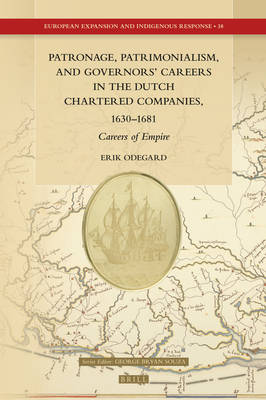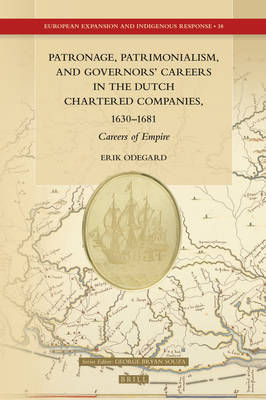
- Afhalen na 1 uur in een winkel met voorraad
- Gratis thuislevering in België vanaf € 30
- Ruim aanbod met 7 miljoen producten
- Afhalen na 1 uur in een winkel met voorraad
- Gratis thuislevering in België vanaf € 30
- Ruim aanbod met 7 miljoen producten
Zoeken
Patronage, Patrimonialism, and Governors' Careers in the Dutch Chartered Companies, 1630-1681
Careers of Empire
Erik Odegard
€ 190,45
+ 380 punten
Omschrijving
How did individuals advance to the highest ranks in the Dutch colonial administrations? And how, once appointed, was this rank retained? To answer these questions, this book explores the careers of Dutch colonial governors in the 17th century with a focus on two case-studies: Johan Maurits van Nassau-Siegen, governor of Dutch Brazil (1636-1644) and Rijckloff Volckertsz van Goens, Governor-General in Batavia in the 1670s.
By comparing a Western (Atlantic, WIC) and an Eastern (Asian, VOC) example, this book shows how networks sustaining career-making differed in the various parts of the empire: the West India Company was much more involved in domestic political debates, and this led to a closer integration of political patronage networks, while the East India Company was better able to follow an independent course. The book shows that to understand the inner workings of the Dutch India companies, we need to understand the lives of those who turned the empire into their career.
By comparing a Western (Atlantic, WIC) and an Eastern (Asian, VOC) example, this book shows how networks sustaining career-making differed in the various parts of the empire: the West India Company was much more involved in domestic political debates, and this led to a closer integration of political patronage networks, while the East India Company was better able to follow an independent course. The book shows that to understand the inner workings of the Dutch India companies, we need to understand the lives of those who turned the empire into their career.
Specificaties
Betrokkenen
- Auteur(s):
- Uitgeverij:
Inhoud
- Aantal bladzijden:
- 300
- Taal:
- Engels
- Reeks:
- Reeksnummer:
- nr. 38
Eigenschappen
- Productcode (EAN):
- 9789004513266
- Verschijningsdatum:
- 10/06/2022
- Uitvoering:
- Hardcover
- Formaat:
- Genaaid
- Afmetingen:
- 155 mm x 234 mm
- Gewicht:
- 594 g

Alleen bij Standaard Boekhandel
+ 380 punten op je klantenkaart van Standaard Boekhandel
Beoordelingen
We publiceren alleen reviews die voldoen aan de voorwaarden voor reviews. Bekijk onze voorwaarden voor reviews.








